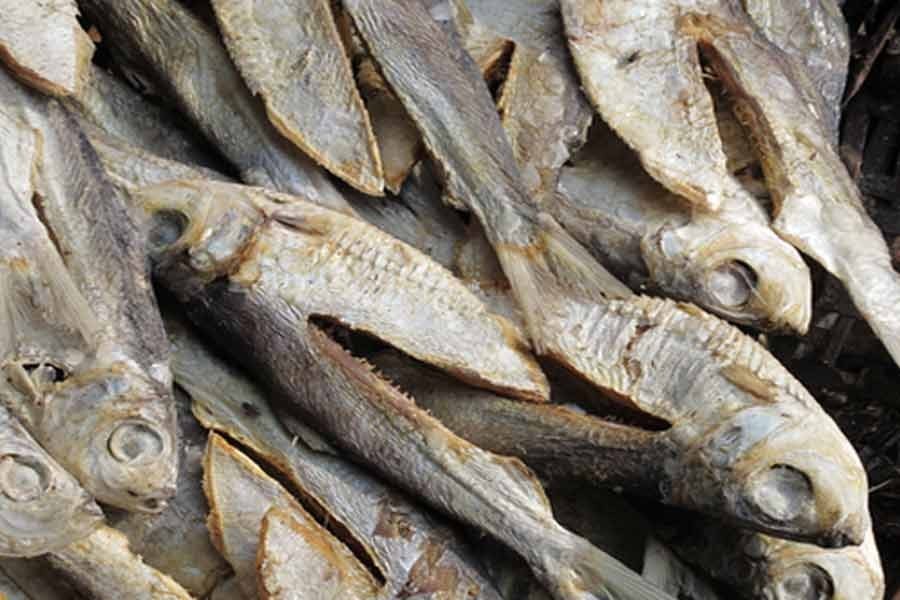Media footage and photographs of sea-based fishing communities spreading their netted catch in the sun are common spectacles these days. The sights this year began appearing in early November and are expected to continue up to March. The venues are the 'chars' or islets in the Bay of Bengal, close to the coast of the southern and eastern Sundarbans. The vast area comprises a number of fishing and fish-drying zones in the sea along the Sundarbans coast. Those include several islets including Dublar Char, the largest of them. Unlike the conventional fishing people, these fishermen have the sole objective of getting sun-dried fishes out of the fresh ones. The dried fishes, from both seas and inland freshwater, are known in the country as 'shutki'. They have for ages been a delicacy among large sections of the country's people.
The sight of boats in rows setting out on journeys for days into the Bay of Bengal to catch sea fishes emerges every year. With the passing of years, the number of 'shutki' producers continues to rise on the 'chars'. The fast depletion of fishes due to over-fishing and different climate-change factors has in the recent times thrown the unique profession into uncertainties. Overcrowding of the 'chars' with new fish catchers has led to a stiff competition. With too many 'shutki' producers on the traditionally popular islets, many elderly fishers have allegedly begun feeling worried about their future. Similar types of anxieties now beset the skilled and professional 'shutki' makers. This unwarranted development has, invariably, led to the skyrocketing of 'shutki' prices.
According to an estimate, around 20,000 people remain busy drying up fishes after hauling them from the Bay. The task is gruelling. In catching the fishes they use thirty types of nets, before drying them in carefully designed phases. They have to remain careful about keeping the fishes' marketability while drying them. As in many other businesses and trading in the country, those dealing with 'shutki' often allegedly fall victim to a section of dishonest elements. They are said to sell poorly processed dried fishes at cheaper prices to both wholesale and retail markets. Insufficiently prepared dried fishes are normally vulnerable to attacks by insects and fungi. It opens the way to application of hazardous chemical repellents on the dried fish products.
The 'shutki'-producing fishermen have their own tales of woes. In spite of a considerable volume of revenue generation by them, they have been made to remain inured to numerous deprivations. To eke out a living, the poverty-stricken fishermen have to remain stationed in the Sundarbans mangrove forest for five months every year, detached from families. But the money they earn from selling dried fishes is miserably poor. These largely marginalised people eagerly await government stimulus. But their wait ends in pipedreams, forcing the relatively large 'shutki' producing entrepreneurs to take loans from moneylenders and local NGOs. This practice occurs at the start of the fishing season every year. The item of 'shutki' has lately made for itself a dominant place in Bangladesh's non-traditional export basket. The country presently exports 'shutki' to the UK, the US and a number of ME countries. Its clients mainly comprise the expatriate Bangladeshis. Despite this fact, the country's dried fish consignments have to go past the foolproof scanners and test at the importing countries' ports of entry. With the country's 'shutki' items from both sea and freshwater enjoying rising popularity abroad, there should be no irregularities which may fritter away a potential source of foreign exchange.


